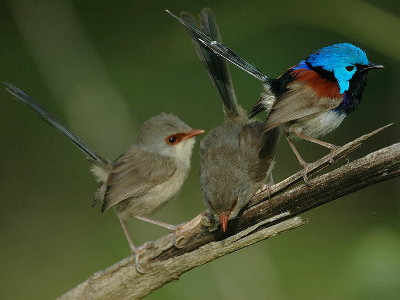Research results show that deforestation is causing rapid insect changes

Studies have shown that stoneflies in the mountains of New Zealand are losing their wings at an unprecedented rate. The researchers argue that this phenomenon is due to 'deforestation' in the habitat.
Anthropogenic evolution in an insect wing polymorphism following widespread deforestation | Biology Letters
https://royalsocietypublishing.org/doi/10.1098/rsbl.2021.0069
Deforestation Can Cause Rapid Evolutionary Changes in Insects, New Zealand Case Shows
https://www.sciencealert.com/deforestation-may-be-causing-some-island-insects-to-lose-their-wings
The endemic stonefly, Zelandoperla fenestrata, which inhabits New Zealand, has two phenotypes , a winged type and a wingless type. It has been said that in highlands where there are few trees, there are many types without wings because they are hit by strong winds and crash, and in forests where trees create three-dimensional terrain, there are many types with wings to increase the range of action. I did.
However, new research reveals that in 'alpine forests,' where the number of winged types has been high, the number of wingless types is increasing where human logging has progressed. I did.
In southern New Zealand, it is said that humans began incinerating virgin forests around 1200, and in modern times 40% of the forests have been transformed into grasslands and pterophyta areas. The wingless type of stonefly has a narrow range of activity, which limits its mating partners, which reduces genetic diversity within the species Zelandoperla fenestrata, the researchers said. It shows the view that it will come.
In recent years, it has been reported that the population of insects has decreased sharply, and in 2019, a report was submitted that 'the total number of insects captured in 30 years has decreased by 76%.'
'Insects are on the verge of extinction' revealed from data from a long-term survey of amateur groups-GIGAZINE

Insects are not the only ones affected by humankind. According to a paper published by biologist Sarah Riding of Deakin University, Australia, 'Allen's rule ' that animals adapted to warm climates due to global warming will have larger limbs and body appendages to favor heat dissipation. Is accelerating. The beak size of the Gang-gang cockatoo and the red-rumped parrot has increased by 4-10% since 1871, and the tail and leg length of the cinereus shrews has increased significantly since 1950. The Himalayan Reef Nose Bat is said to have a 1.64% longer wingspan since 1950.
New research reveals animals are changing their body shapes to cope with climate change
https://theconversation.com/new-research-reveals-animals-are-changing-their-body-shapes-to-cope-with-climate-change-166267
'We have found clear evidence that birds with smaller beaks are less likely to survive the heat wave,' Riding said of bird beak size, and warming encouraged larger appendages. Claims to be. He said that while some animals adapt to human-derived temperature changes, many organisms cannot.
Related Posts:
in Creature, Posted by darkhorse_log







